A garden for St. Joseph
CEBU CITY, Philippines — Saint Joseph, the foster-father of Jesus and the patron saint of fathers and workers, has been an important part of the Christian faith here, particularly for the Catholic faithful.
The feast of San Jose, as many Cebuanos call him, has been celebrated with grandeur every March 19. This is especially true to Mandaue City, which celebrates the feast of Saint Joseph the Worker every May 8, and more so with National Shrine of St. Joseph being located in the city.
Yet not only Mandauehanons are devoted to him, as the rest of Cebu honors Christ’s foster father on Earth in various ways.
A university named after him, the University of San Jose Recoletos, religiously celebrates his feast day with a holiday and many chapels dedicated to the saint also conduct their own local fiestas.
These celebrations this year were, of course, suspended due to the coronavirus disease 2019 (COVID-19) with the Archdiocese of Cebu urging the faithful to remain in their homes and avoid gathering for the feast day.
Yet amid the limitation, the Cebu Archdiocesan Shrine of Jesus Nazareno in Barangay Cansojong, Talisay City, has managed to pull off one of the most beautiful dedications to the saint in all of Cebu.
The Cebu Archdiocesan Shrine of Jesus Nazareno, with the Immaculate Heart of Mary Refuge sisters, and Collegium Societatis Angeli Pacis, opened the Jardim de Sao Jose (Hardin ni San Jose) last March 19, 2021, in time for St. Joseph’s feast day and two weeks before the Holy Week.
The garden will be open to personal pilgrims during the Holy Week, although the Archdiocesan shrine will be limiting entry as compliance to the social distancing and health protocols of the Inter-Agency Task Force (IATF).
For those who can take the time to visit the Jardim de Sao Jose, they will be greeted at the garden by a life-size image of Saint Joseph.
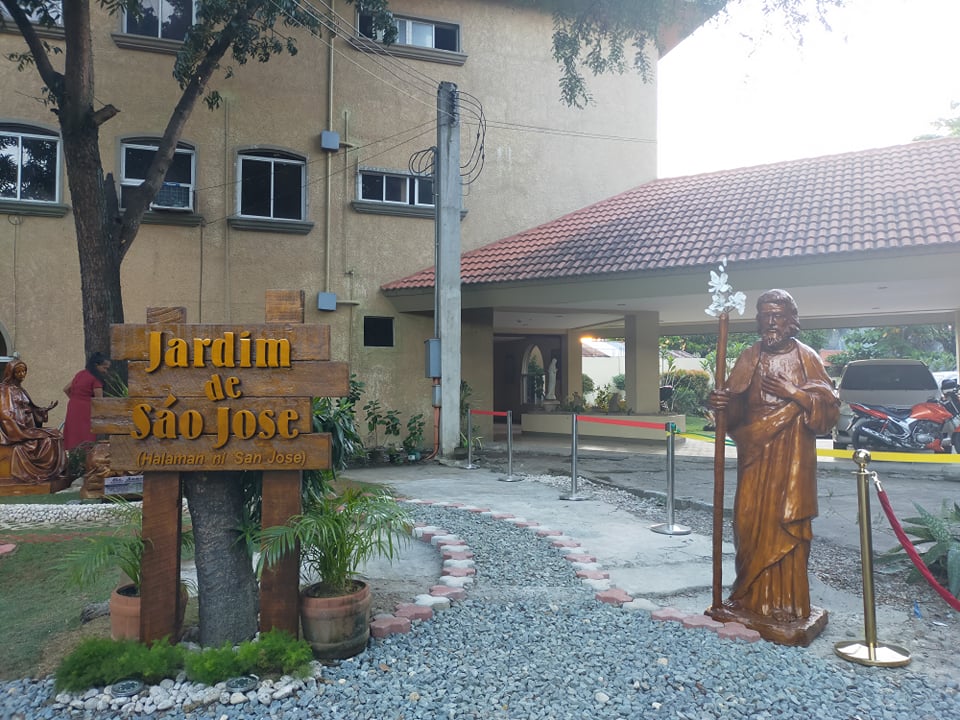
Jardim de Sao Jose, Archdiocesan Shrine of Jesus Nazareno in Barangay Cansojong, Talisay City
The garden features the Seven Joys and Sorrows of St. Joseph in life-size statues depicting scenes from the annunciation of the Angel Gabriel to Mary, the birth of Jesus, the prophecy in the naming of Jesus, the return from Egypt, Jesus getting lost in the temple in Jerusalem, and the life of the Holy family in Nazareth,
This devotion entails the pilgrims to pray seven Our Fathers and seven Hail Mary’s to remember the sorrows and joys of the Holy Saint.
According to a written piece by Father Dan Cambra, Marians of the Immaculate Conception (MIC), the origin of this devotion is traced to an incident involving two Franciscan priests traveling in a ship along the Belgium coast. A storm hit, and the ship was sunk.
For three days and three nights, the two priests clung to a plank and prayed to St. Joseph. Then, at one point, in youthful form, the spouse of the Virgin Mary and foster-father of Jesus Christ appeared to the priests, guided them to safety, and taught them the practice of reciting seven Our Fathers and seven Hail Marys in honor of his Seven Sorrows and Seven Joys.
Here are the life-size sculptures that pilgrims can expect when they visit the Jardim de Sao Jose:
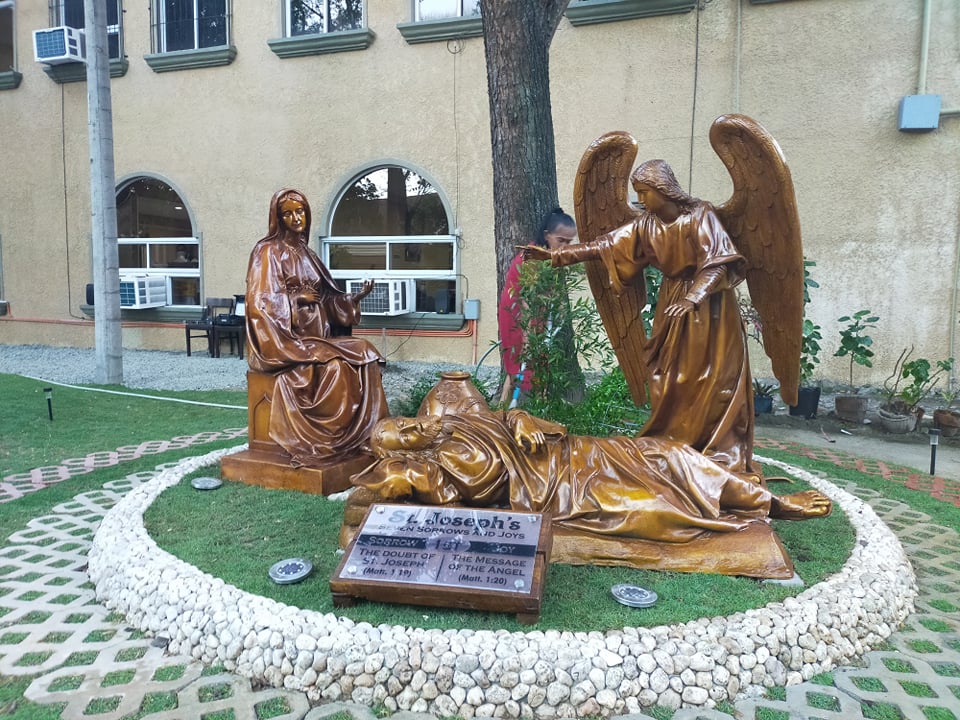
The doubt of Joseph and the Annunciation of the Angel Gabriel to Mary.
The doubt of Joseph and the Annunciation of the Angel Gabriel to Mary on her conception of the Christ the Savior is the start of the garden’s journey.
This details the sorrow of St. Joseph upon learning of Mary’s conception, but willingly accepting her to his home as his wife after the Angel of Lord came upon him in a dream and prophesied the birth of the Messiah.
This sculpture is followed by Mary and Joseph’s journey to Bethlehem, the humble birth of Christ, and the prophesies surrounding Jesus’ naming and offering to the temple.
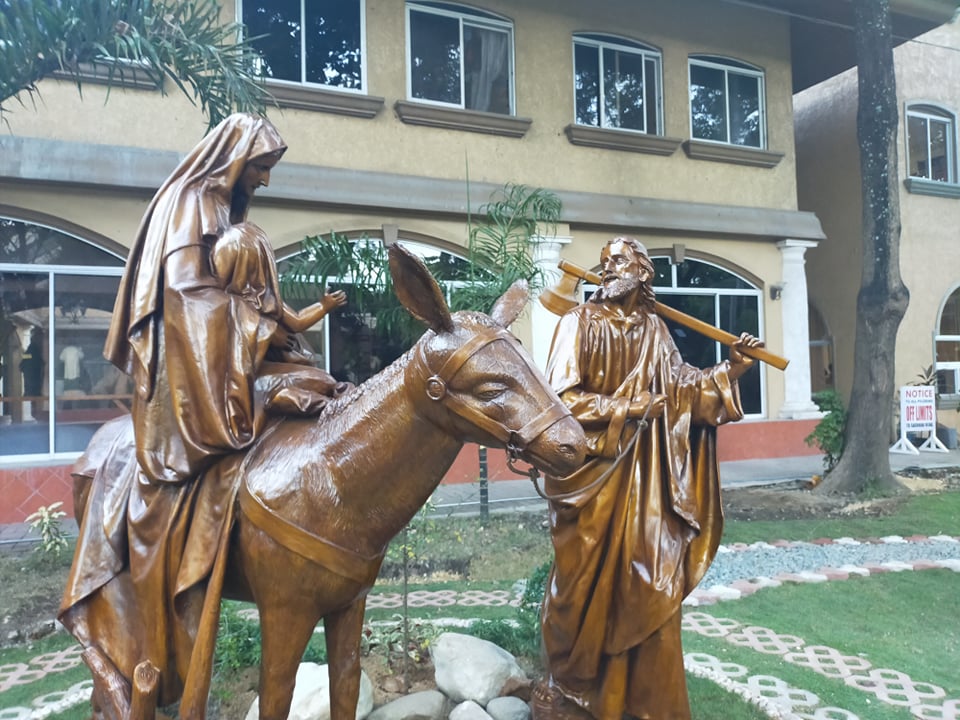
The journey to Bethlehem.
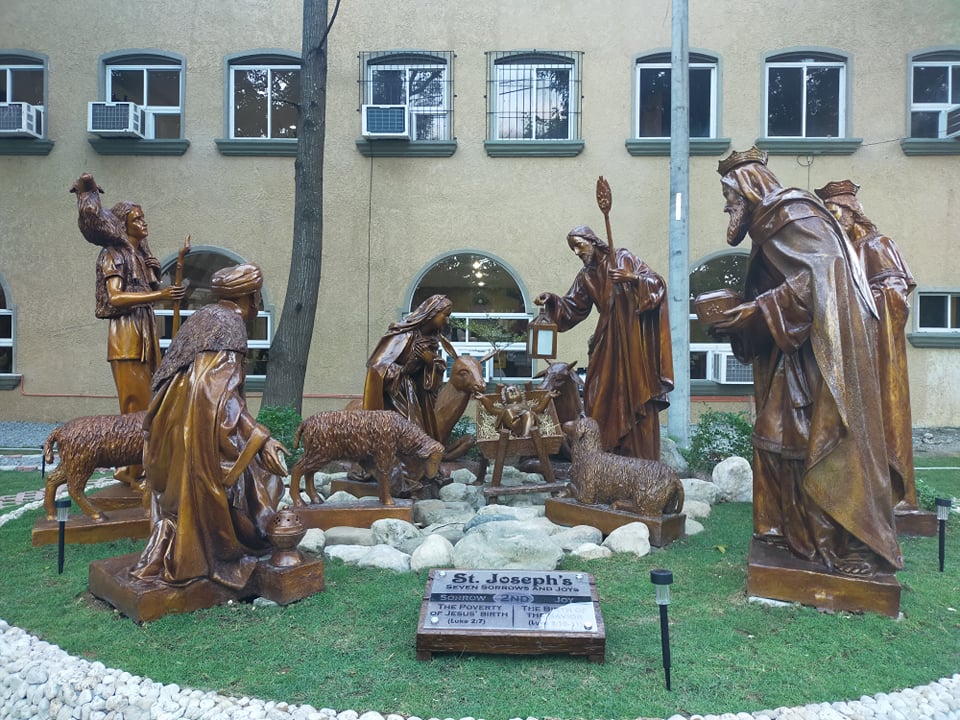
The birth of Christ in the manger.
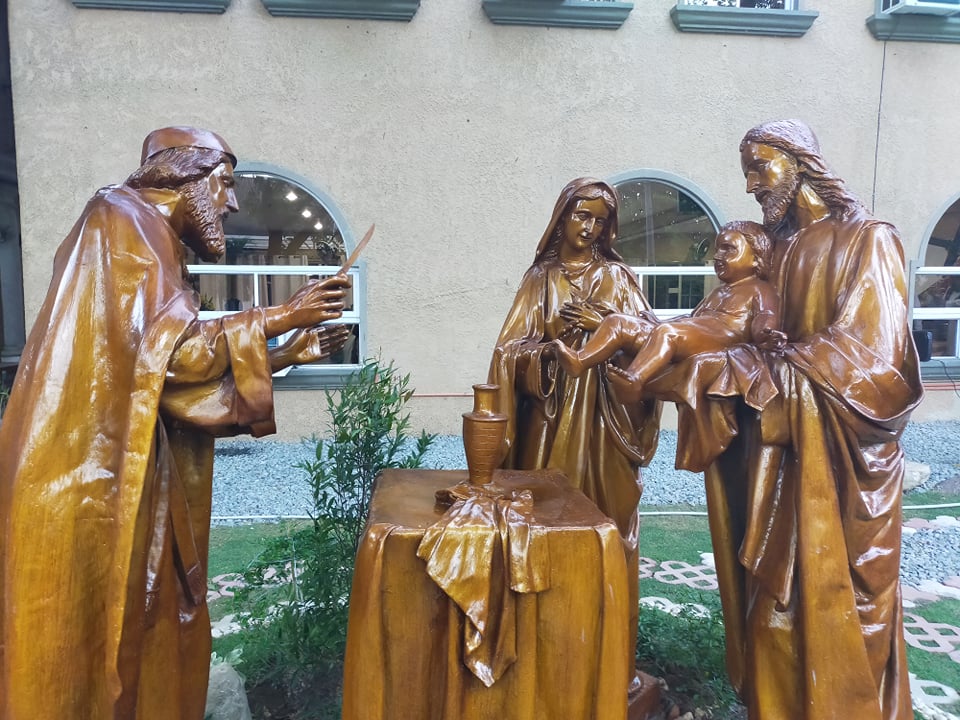
Presenting Jesus to the temple.
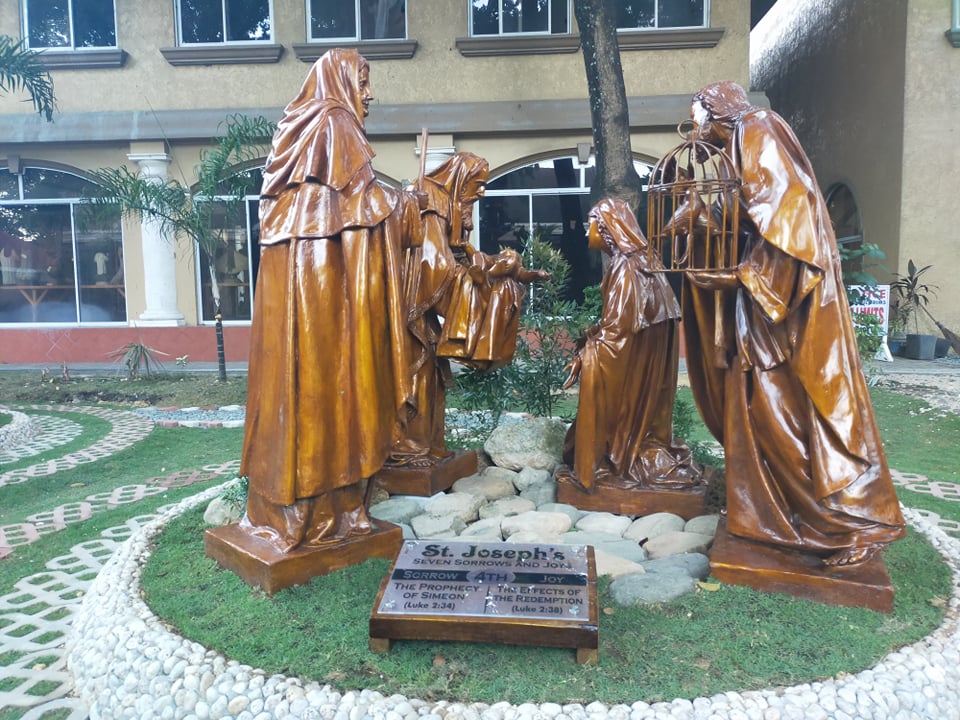
The prophecy of Simeon was fulfilled upon Jesus presentation to the temple.
The most notable depiction in the Jardim de Sao Jose is the life of the Holy Family in Nazareth upon their return to Egypt until the child Jesus being lost in the temple.
The Archdiocesan Shrine said in a statement that these images of the life of the Holy Family are reminders that the early life of Jesus Nazareno or Jesus from Nazareth centered on family, where St. Joseph and Virgin Mother Mary played a huge role in raising the Son of God in a normal Jewish family.

The return of the Holy Family from Egypt to settle in Nazareth.
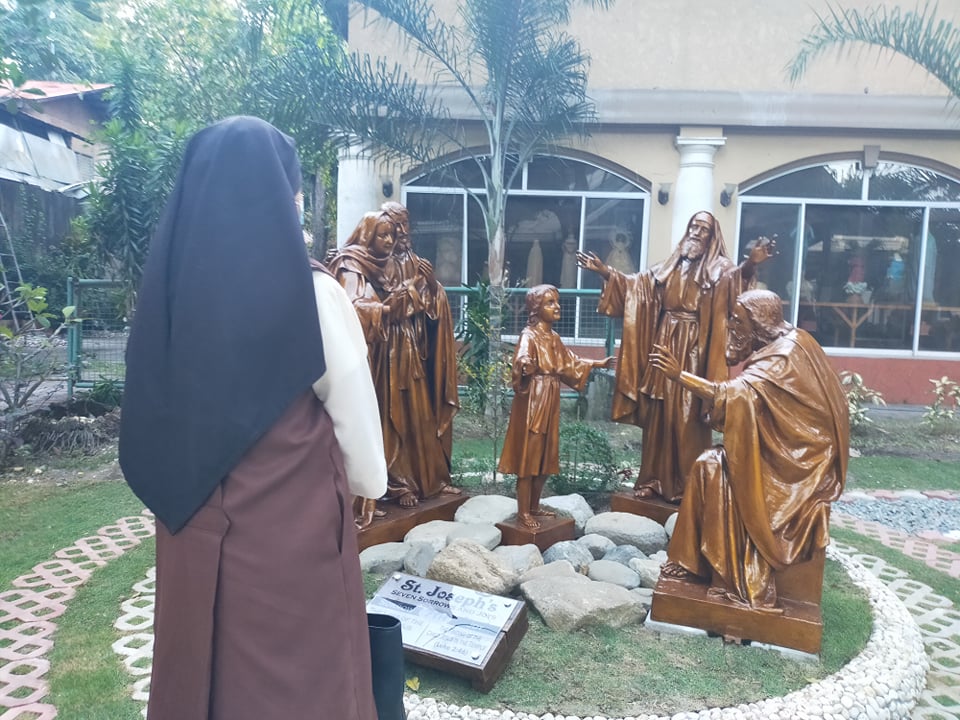
A nun gazes on the depiction of Jesus preaching at the temple in Jerusalem in his childhood.
The Jardim de Sao Jose is a reminder of Jesus’s human upbringing, a testament to the manifestations of His being, a true God and a true Man in one Christ.
Behind that upbringing is the love and care of His parents, Mary and Joseph, whose sorrows became joys in their undoubting faith in The Almighty.
This kind of faith has been solidified in Jesus’ words in the Last Supper, “I will turn your sorrow into joy.” (John 16:20).
/dbs
Related Stories
Palma to Devotees: Give time this Holy Week
Palma reminds churches, devotees no crowd-gathering events for Holy Week
Devotees told to emulate the virtues of St. Joseph
Disclaimer: The comments uploaded on this site do not necessarily represent or reflect the views of management and owner of Cebudailynews. We reserve the right to exclude comments that we deem to be inconsistent with our editorial standards.
